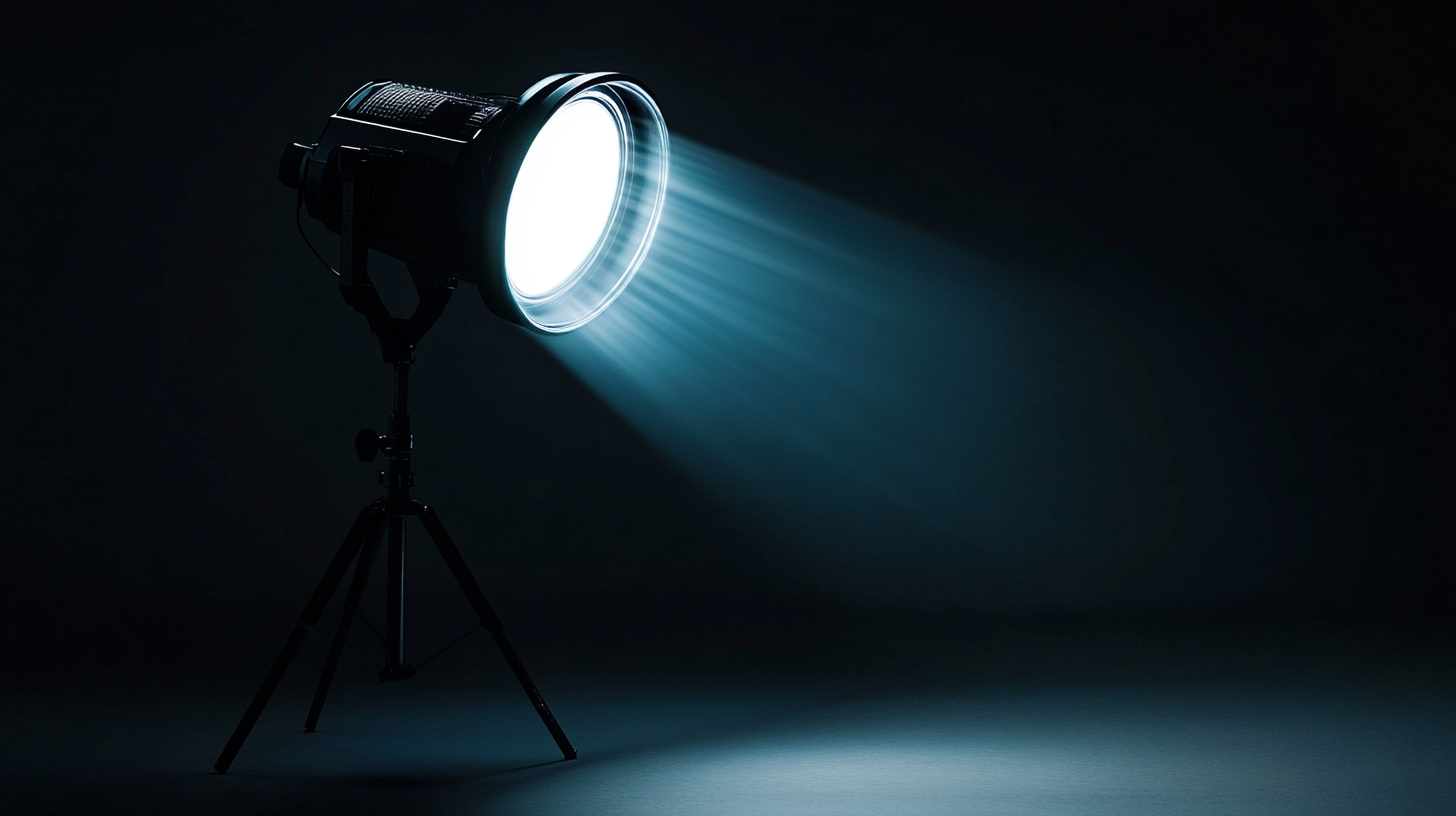Navigating Global Trade Certifications: Your Guide to Sourcing Premium LED Spotlights
The global LED lighting market is rapidly expanding, with recent reports projecting it to reach over $105 billion by 2025. This surge is largely driven by increasing energy efficiency regulations and growing environmental awareness among consumers. Within this booming market, LED spotlights have emerged as a key player, offering versatility and superior performance for both residential and commercial applications. As businesses aim to source premium LED spotlights, navigating the intricacies of global trade certifications becomes essential.
Understanding the requirements for sourcing LED spotlights involves more than just price and availability; it also encompasses compliance with various international standards. For instance, certifications such as Energy Star, CE, and RoHS not only ensure product quality but also enhance marketability. By familiarizing themselves with these certifications, businesses can not only safeguard their investments but also position themselves to meet the evolving expectations of eco-conscious consumers. In this comprehensive guide, we will explore the critical certifications needed for LED spotlights, helping you make informed sourcing decisions.

Understanding the Importance of Global Trade Certifications for LED Lighting Industry
In the rapidly evolving LED lighting industry, global trade certifications play a crucial role in ensuring product quality, safety, and environmental compliance. Recent developments, such as the introduction of the RoHS certification for imported and exported products, highlight the increasing focus on regulatory requirements. The RoHS directive restricts the use of specific hazardous materials in electrical and electronic devices, making compliance essential for manufacturers looking to enter international markets. Moreover, the establishment of new certification programs, like the platinum certification initiative launched recently, emphasizes the industry's commitment to excellence. This program aims to recognize outstanding LED screen solutions, fostering innovation and setting higher standards within the sector. Such certifications not only enhance the credibility of manufacturers but also serve as a trust signal for consumers who are increasingly mindful of product sustainability and safety. As the global marketplace tightens its grip on regulations and standards, companies involved in LED lighting must prioritize obtaining necessary certifications. This approach not only meets legal obligations but also responds to consumer demands for environmentally responsible and high-quality products. By navigating these certification processes effectively, businesses can position themselves competitively in the demanding landscape of global trade.

Key Certifications to Look for When Sourcing LED Spotlights Globally
When sourcing LED spotlights for educational institutions like Changchun Normal University, understanding key global trade certifications is essential. Certifications not only ensure the compliance and quality of the products but also hide the intricacies of manufacturing standards that vary across regions. For instance, certification from recognized bodies like the Underwriters Laboratories (UL) or the European Conformity (CE) mark can give confidence to buyers that the products have undergone rigorous safety and performance testing.
Moreover, when considering the purchase of LED lighting solutions for dormitory spaces, there's a growing emphasis on eye protection features. Buyers should look for LEDs that are specifically designed to reduce glare and flicker, enhancing the overall user experience. These characteristics would align with the school's objective of creating a conducive environment for students. In addition to safety certifications, it's beneficial to identify products that highlight energy efficiency, which can lead to long-term cost savings and sustainability.
Ultimately, being diligent about certifications while sourcing LED spotlights can not only meet the immediate needs of light quality and safety but also align with broader institutional goals of energy efficiency and student well-being. This detailed approach during the procurement process will lead to a successful project outcome for educational facilities.

Analyzing the Impact of Certification Compliance on Global Trade Performance
In the realm of global trade, certification compliance emerges as a pivotal factor influencing the performance and competitiveness of businesses, especially in the LED spotlight industry. According to a report from MarketsandMarkets, the global LED lighting market is projected to grow from $69.6 billion in 2020 to $130.5 billion by 2026, with an annual growth rate of 11.3%. As this market expands, manufacturers are increasingly prioritizing certifications to meet international standards, which can significantly enhance their marketability and consumer trust.
The impact of certification compliance extends beyond mere market access. A study by the International Trade Centre highlights that businesses adhering to international certification standards can reduce trade barriers by over 20%. This compliance not only ensures product quality but also aligns manufacturers with sustainability goals, thereby appealing to environmentally conscious consumers. For example, certifications such as ENERGY STAR and UL Listing not only help products stand out in a crowded marketplace but can also lead to substantial energy savings and reduced environmental impact, reinforcing a brand's commitment to sustainability.
Moreover, navigating the complex landscape of global certifications can lead to strategic advantages. Companies that excel in compliance often report higher customer satisfaction rates, as demonstrated by a 2021 survey from McKinsey, which found that 70% of consumers consider certification labels as essential factors in their purchasing decisions. By investing in achieving and maintaining these certifications, LED spotlight manufacturers can foster brand loyalty and drive repeat business, positioning themselves effectively in an increasingly competitive global market.

Comparative Study: Certification Requirements Across Major LED Spotlight Markets
When delving into the LED spotlight market, understanding certification requirements across various regions is pivotal for successful sourcing. Each major market, whether it's the United States, Europe, or Asia, has distinct standards and certifications that manufacturers must comply with. For instance, in the United States, the Department of Energy mandates that LED products carry the Energy Star certification, which not only ensures energy efficiency but also enhances consumer trust. Meanwhile, the European Union has established a comprehensive framework with the CE mark, indicating conformity with health, safety, and environmental protection standards.
Asia presents a more fragmented landscape, with countries like Japan and China having their unique certification processes. The Japanese Industrial Standards (JIS) and China's Compulsory Certification (CCC) mark each signify adherence to specific safety and performance benchmarks. Understanding these requirements is not just about compliance; it can significantly impact market entry strategies and product marketing. By aligning with these certifications, manufacturers can position their products more favorably, catering to the increasingly eco-conscious consumer base looking for reliable and high-quality LED options.
A comparative study of these certification frameworks reveals that while the foundational goals—ensuring safety, performance, and energy efficiency—are similar, the implementation and focus areas can vary notably. Recognizing these differences is essential for companies aiming to navigate the complexities of global trade in LED spotlights, ensuring they remain competitive while fostering innovation in their offerings.
Future Trends in Global Trade Certifications for Sustainable LED Lighting Solutions
The push for sustainable LED lighting solutions is becoming increasingly vital in today's global trade landscape. As certifications like Environmental Product Declarations (EPDs) gain prominence, companies are encouraged to adopt certification processes that not only meet regulatory requirements but also communicate their commitment to sustainability. Recent developments highlight this trend; a notable instance being the certification awarded by TÜV to a leading lighting company, emphasizing the importance of environmental accountability in the production of LED products. This move is in line with a growing demand for transparency among consumers and stakeholders who prioritize eco-friendly solutions.
Forecasts indicate that the global LED lighting market could reach USD 105.5 billion by 2026, with a significant portion of growth driven by sustainability-focused regulations. This shift is particularly evident in Europe, where stringent environmental standards force manufacturers to rethink their approach. The Netherlands has become a notable destination for Chinese businesses seeking to meet these certification benchmarks while expanding into the European marketplace, showcasing an increasing trend of cross-border collaborations aimed at fostering sustainable practices.
Moreover, industry reports suggest that up to 80% of businesses now view sustainability as a key driver for growth, pushing them to invest in advanced technologies and cleaner production processes. As companies navigate the complexities of global trade certifications, staying ahead of these trends will be essential to retain a competitive edge and appeal to a market that increasingly values sustainability in its purchasing decisions.
